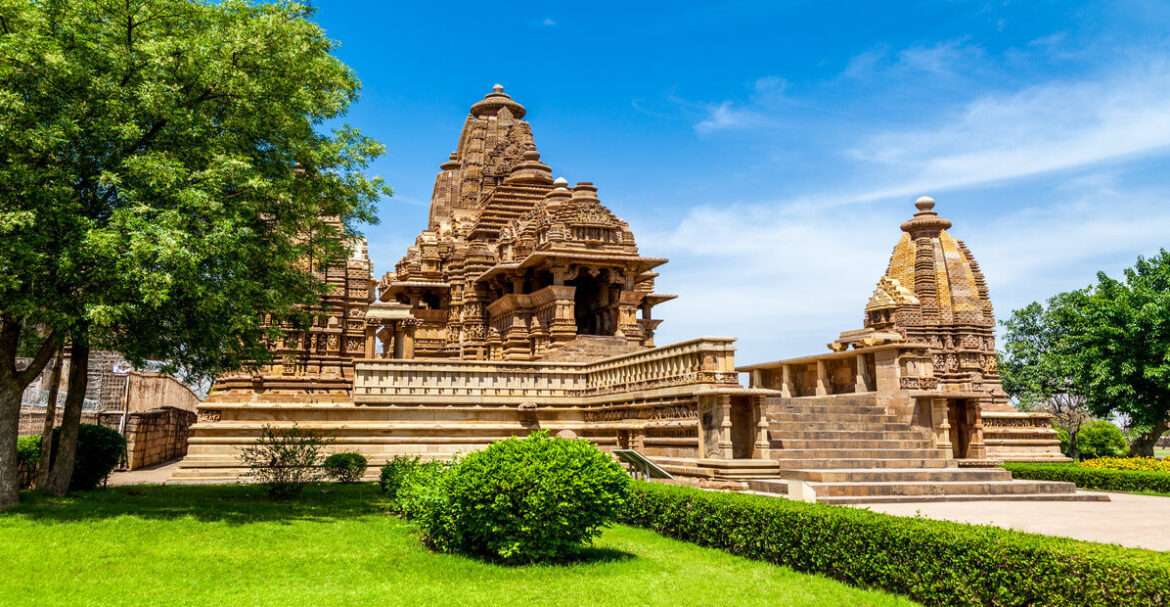The Khajuraho Group of Monuments: A Wonder of Culture
Introduction
The Khajuraho Group of Monuments, a UNESCO World Heritage Site known for its remarkable architecture and detailed sculptures, is located in Chhatarpur, Madhya Pradesh. Constructed by the Chandela dynasty during the 10th and 12th centuries, these temples exhibit exceptional craftsmanship and portray a blend of Jainism and Hinduism.
Architectural Magnificence:
The temples are beautifully designed in the Nagara style and are grouped into three groups: Western, Eastern, and Southern. The sandstone walls are adorned with elaborate carvings that portray a multitude of themes, ranging from heavenly creatures and deities to everyday activities and romantic moments. These statues pay tribute to India’s rich cultural heritage and traditional artistry.
Exploring the Temples:
The most well-known temples, including Devi Jagadambi, Kandariya Mahadev, and Chitragupta, are located in the Western Group. The Kandariya Mahadev Temple is a masterpiece of art and architecture, with thousands of sculptures adorning it.
Group in the East:
While not as large as the Western Group, this region is no less remarkable and is home to important temples like Parsvanatha and Ghantai. The exquisitely carved columns of the Parsvanatha Temple serve as a monument to the Jain architectural style.
Southern Division:
This group consists of lesser temples such as Chaturbhuj and Duladeo. The Chaturbhuj Temple is renowned for both its calm surroundings and commanding architecture.
Ideal Time to Go:
The winter months of October through March are the ideal times to visit Khajuraho because of the moderate temperatures, which range from 10°C to 25°C (50°F to 77°F). There are fewer people and softer light in the mornings and evenings, making for an enchanted perspective of the temples.
How to Get There and Where to Stay:
There is an airport in Khajuraho from which there are frequent flights to big cities like Delhi and Mumbai. The closest major train station, accessible by car and train, is located approximately 63 kilometers away at Mahoba. There are several lodging options close to the temple complex, ranging from affordable guesthouses to opulent resorts.
Travel Advice:
Dress modestly to honor the temples’ sacredness.
There are admission costs; Indian and foreign visitors pay different amounts.
There are guides on site who can add to the experience by sharing their knowledge of the temples’ significance and history.
Conclusion:
Exploring the Khajuraho Group of Monuments provides an amazing opportunity to discover India’s rich cultural past. These temples are a must-see because of their exquisite craftsmanship and magnificent architecture, which offer a window into the spiritual and cultural magnificence of ancient India.

